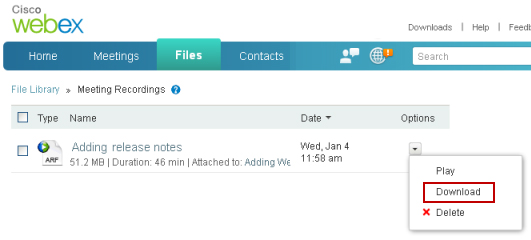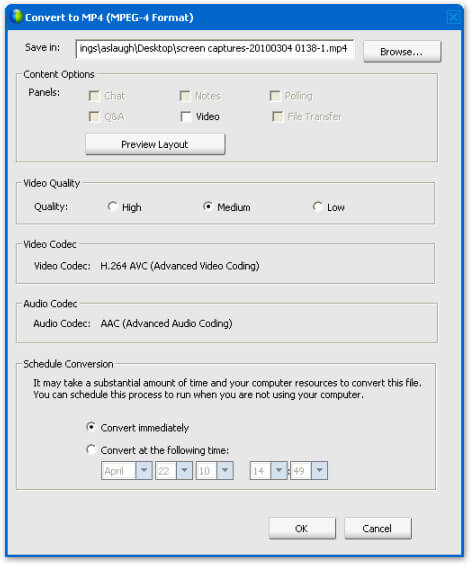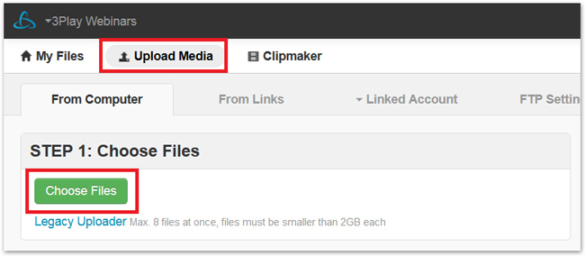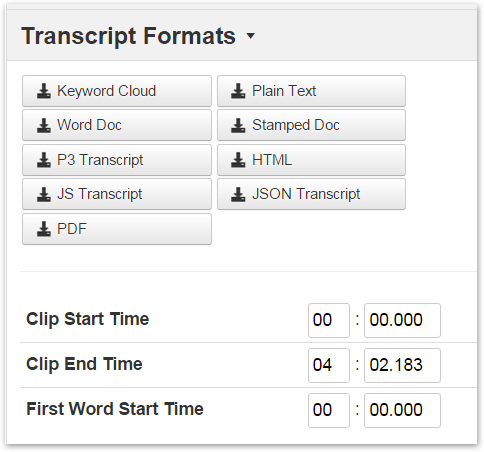How Webex by Cisco Transcription & Closed Captioning Works
Webex is a real-time video conferencing tool that lets you share your screen with colleagues remotely. It’s great for connecting to e-meetings, virtual conferences, or remote presentations.
You can record your Webex session as a video to use for future reference or to share with absent colleagues.
But what if you need to add closed captions to make the meeting accessible to viewers who are deaf or hard of hearing? Or what if you need to provide a transcript of a meeting?
Here are your step-by-step instructions for how to transcribe and add closed captions to Webex recordings.
How to Make Corporate Videos Accessible

Step 1 – Record and Download your Webex Meeting
Webex by Cisco provides detailed support documents to help you start, pause, resume, and stop recording your screen. The maximum recording file size is 2 GB, or about 24 hours of audio recording.
Once you’ve recorded your meeting, download the video file to your computer. Note that an administrator must grant you permission to downloaded recordings.
In your Webex dashboard, go to Files > Meeting Recordings. Select Download under the Options drop-down menu next to the recording you want. Name and save your file on your computer.

Step 2 – Convert Recordings to MP4 Format
Webex recordings are automatically saved as .arf files, a proprietary format. You’ll need to convert it to a usable file format such as Windows Media Format (.wmv), Shockwave Flash Object format (.swf), or MPEG-4 format (.mp4). MP4 format is recommended for maintaining the highest audio and video quality.
To convert recordings of your Webex meeting, you’ll need to install the Webex Network Recording Player on your computer, if you don’t have it already. Unfortunately, this converter does not work on iOS devices.
Launch the Network Recording Player and then choose File > Open to locate and open the recording file.
While playing the meeting in the Network Recording Player, select File > Convert > MP4 (MPEG-4 Format). This dialogue box should appear:
Specify where you’d like your MP4 file saved in the Save in field.
Under Content options, select Video and any other meeting components that you want to save:
- Chat: includes all chat conversations.
- Q&A: if you are recording a Training Center session, this includes any Q&A sessions.
- Notes: includes any notes entered into the Notes panel.
- Polling: if you are recording a Training Center session, this includes any polls.
Under Video Quality, select your preferred video quality. Select Convert Immediately under Schedule Conversion, unless you need to delay this step to conserve your computer’s resources.
Hit OK to start the conversion process. It may take a while, depending on the length of the recording and the quality selected.

Step 3 – Submit Your Webex Recording for Transcription
Log into your 3Play Media account.
From the Upload tab at the top of the screen, select From Computer, choose your video, and follow the onscreen prompts to specify turnaround. You’ll receive an email when your video has been transcribed.
For additional details, read the support article on uploading videos for transcription and captioning.

Step 4 – Order Captions Encoded Into Your Recording
This step will produce a self-contained M4V file with embedded closed captions that can be turned on or off by the end user. There is also an option to produce an M4V file with open captions that are burned into the video and can’t be turned off.
Once you’ve received an alert that your video has been transcribed, log into your 3Play Media account.
Select My Files from the top navigation.
Check the box next to your Webex recording, and select Order > Caption Encoding.
The caption encoding process may take up to 4 hours. Upon completion, you will receive an email notification with a link to download the captioned video.

Download Transcript of WebEx Recording
To download a transcript of your Webex meeting, navigate to your file from My Files on your 3Play account.
Check the box next to your file and hit Download.
Click on Transcript Formats, and a range of file formats will display.
Select the file format(s) you want for your downloadable transcript. A plain text file, PDF, or MS Word Doc should be sufficient for most transcript needs. If you want a transcript with time stamps included, select “Stamped Doc.”
Once you click on a file format, your transcript will immediately download to your computer.

How to Add Subtitles to Webex Recordings
If you want to add subtitles in other languages, submit your Webex recording for translation.
In your 3Play Media account, click on your video file under My Files.
Select Order > Translation.
Choose the language you want for your subtitles, as well as the style of translation.
Once your translation is completed, follow Step 4 above to encode subtitles into your video. You can also download a transcript of the translation.

Why Use Video Transcripts?
Since your video needs to be transcribed to create closed captions anyway, why not download your meeting transcript and share that with attendees, too?
Video transcripts are great for skimming your meeting content.
Digital transcripts are easily searchable so you can find what you’re looking for immediately.
Blind and deaf-blind people may need a text transcript that is accessible by a screenreader. If a person with a disability requests a downloadable transcript of your Webex meeting, you may be required by federal accessibility law to provide one.
How to Make Corporate Videos Accessible



